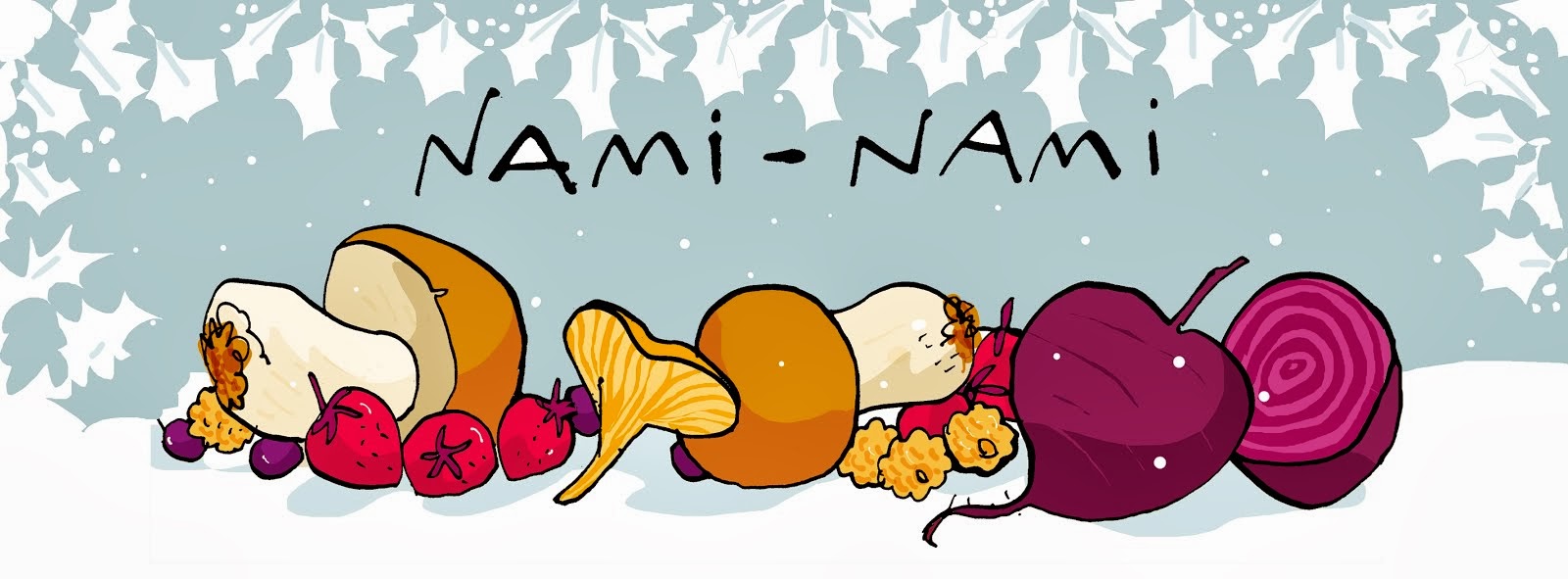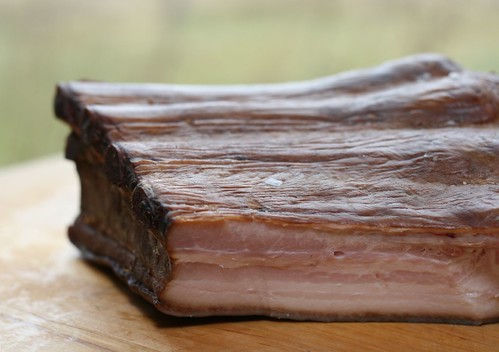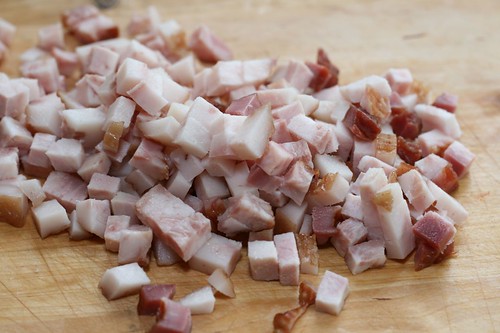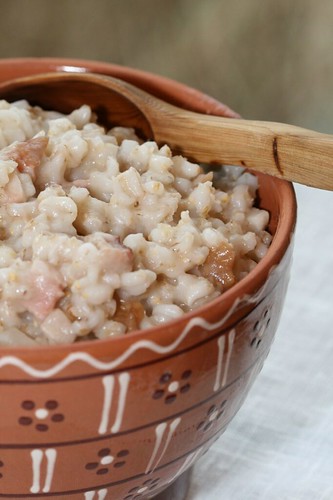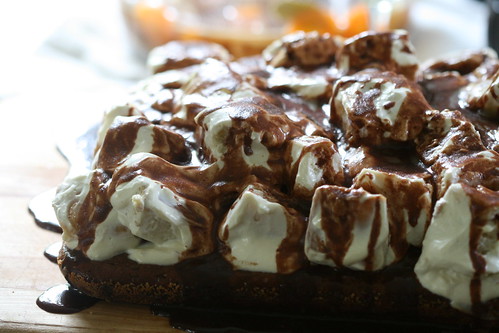 Alexander cake, March 2011, dyed with sea-buckthorn juice concentrate
Alexander cake, March 2011, dyed with sea-buckthorn juice concentrate
I'm dedicating February to various
Estonian recipes, so if you've travelled to Estonia and want a specific recipe or two, let me know.
Aleksandrikook aka Alexander cake has been requested here on Nami-Nami on several occasions, so it's about time to listen to my dear readers and post a recipe :)
To start with, Alexander cake is not actually Estonian in its origin, even though it's rather popular here and found in many traditional coffee and pastry shops. Our Nordic neighbours, Finns, claim the cake as their own. But then I've even come across recipes for Alexander cake in Latvian cookbooks, so it's popular in all over the North-Eastern corner of Europe.
Apparently its history goes back to 1814 or 1818, depending on your sources, when
Alexander I of Russia, the reigning czar, visited Helsinki, and was served this concoction on his birthday. The cake is mentioned in
Kullo manor's ledger books from 1819-1821. By 1850s, the cakes were sold in
Café Ekberg (they
still are, gorgeously pink in colour and sandwiched with apple spread).
In principle, it's a simple cake. Two layers of shorcrust pastry, sandwiched with thick raspberry (or other) jam, and topped with simple icing. However, as one
talented Estonian food blogger has written somewhere, it's actually a tricky cake to do well. First, it's important not to overmix the pastry, as it won't have the right texture. It's important to roll out the pastry evenly, as otherwise it won't bake evenly. To lift one cake layer on top of the other is tricky as well - if you're unlucky, it'll break apart. If you're making this in a cafeteria, then you'll need to cut perfectly even-sized rectangles, and the glaze needs to be pretty and pink (or cocoa-brown, if you're opting for the cocoa glaze).
NOTE: this should be baked and put together a day before serving, otherwise it'll be too dry and crumbly!
 Alexander cake, September 2009, dyed with fresh black aronia juice and white chocolate
I've included some links to Estonian and Finnish foodbloggers that have written about the cake - you'll find them at the end of this post.
Alexander cake
Alexander cake, September 2009, dyed with fresh black aronia juice and white chocolate
I've included some links to Estonian and Finnish foodbloggers that have written about the cake - you'll find them at the end of this post.
Alexander cake
(
Aleksandrikook)
Cuts into 12 rectangles
 Alexander cake, March 2011, dyed with sea-buckthorn juice concentrate
Alexander cake, March 2011, dyed with sea-buckthorn juice concentrate
Pastry layers:
125 g caster sugar (150 ml)
300 g all-purpose flour (500 ml, about 2 cups)
1 tsp baking powder
200 g butter, at room temperature
1 egg
Filling:
250 ml (1 cup) thick raspberry jam
Glaze:
250 g icing sugar/confectioners sugar (about 400 ml)
3-4 Tbsp raspberry or black aronia juice
Make the pastry by mixing all dry ingredients in a large bowl. Add the butter, and using your fingers for mixing, mix until you've got large crumbs. Add the egg and quickly mix the pastry until it comes together.
Take a parchment paper that fits your baking sheet. Place the pastry on top of the paper and using a slightly floured rolling pin, roll the pastry to fit the baking sheet.
Bake in a preheated 175C/350F oven until dry and light golden brown (about 20 minutes).
Take out from the oven, and cut into two even-sized rectangles (the final cake will be half the size of your baking sheet). Cool lightly.*
Spread the jam over one shortcake base. Then very carefully lift the other shortcake layer on top of the one covered with jam.
Cut into squares (but don't separate the pieces) and leave to cool completely.
Make the glaze by mixing some colourful juice into the icing sugar until you've got a runny sugar glaze. Pour and spread that over the cake pieces and leave to set.
* Note that there is an alternative way of baking this cake - you'll sandwich two shortcake layers together with jam BEFORE baking (obviously you'll need to bake it a bit longer then). I've never tried this version.
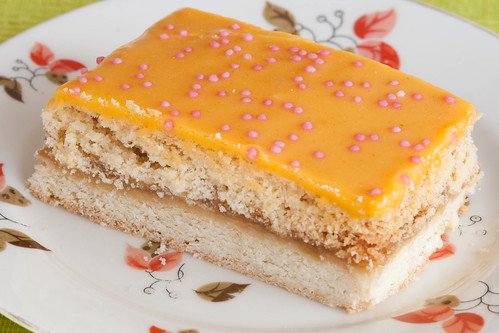 Alexander cake, March 2011, dyed with sea-buckthorn juice concentrate
Alexander cake, March 2011, dyed with sea-buckthorn juice concentrate
Fancy more? Here are some links to other foodbloggers' posts about Alexander cake - these give you a good idea about the different ways of glazing the cake.
ESTONIAN BLOGGERS:
Aniitram (a classic cocoa frosting and white frosting, zigzag pattern),
MARU (Estonian designer and food writer),
Qsti,
Ragne,
Liina,
Sille
FINNISH BLOGGERS:
Kinuskikissa (one of the most popular Finnish foodbloggers, she used a cappuccino-flavoured glaze),
Jaana, Sarppu (apple version),
Maija (she uses marzipan in the filling!).
LATVIAN BLOGGERS:
Zitinja

